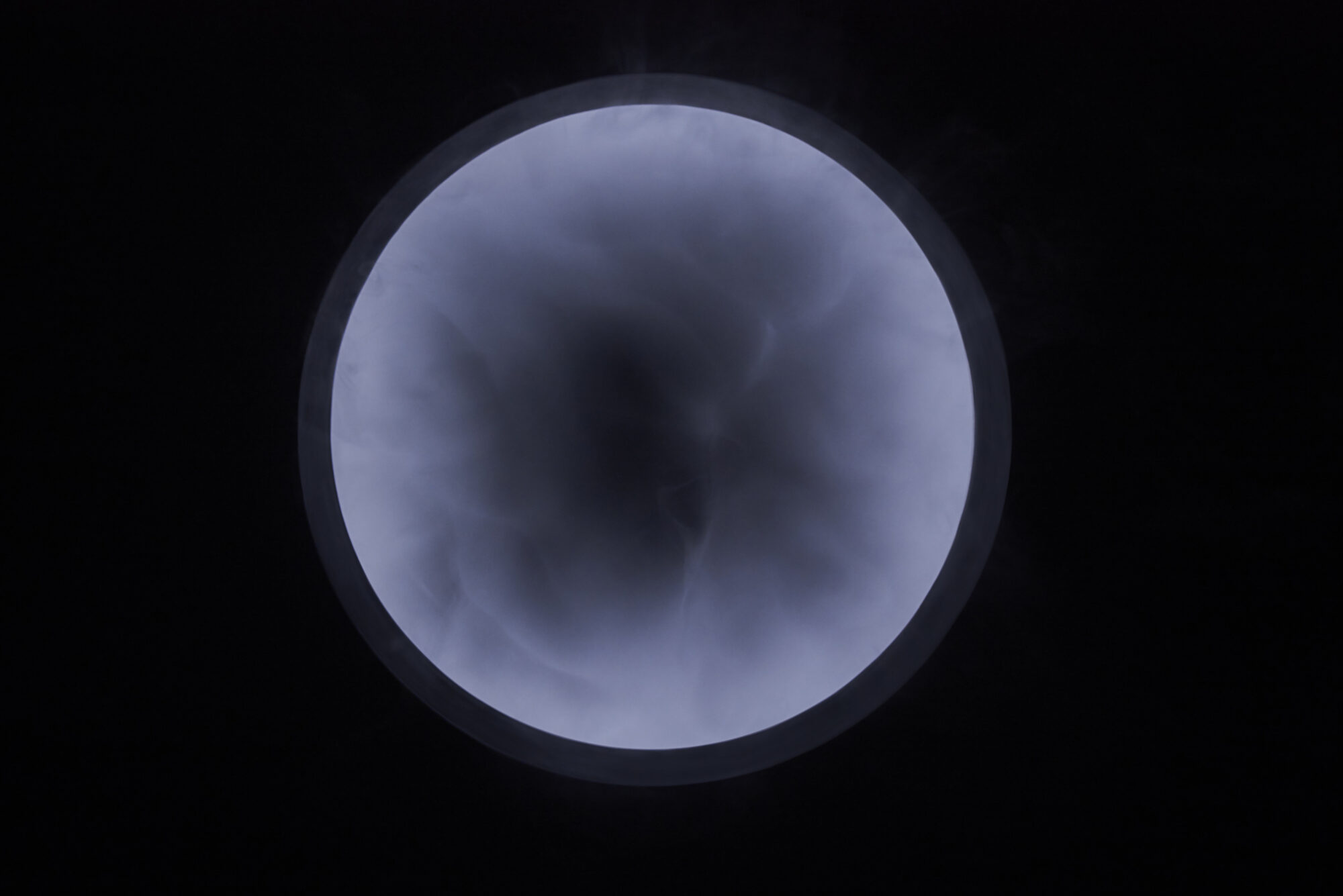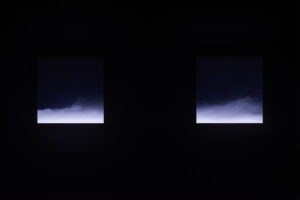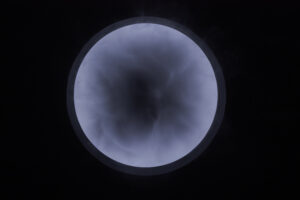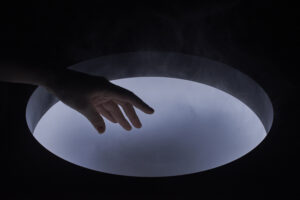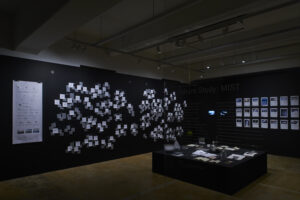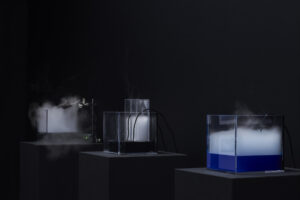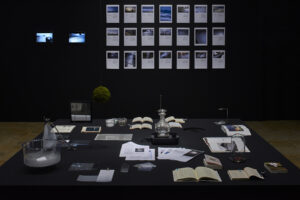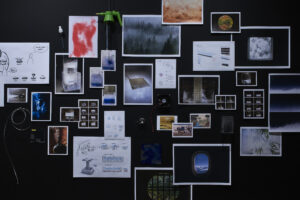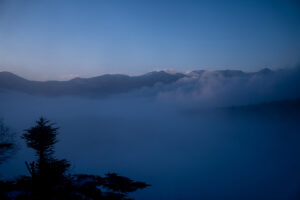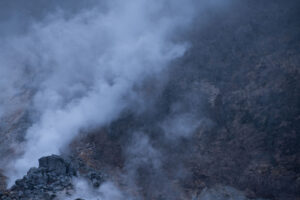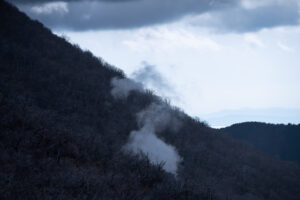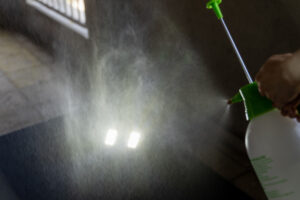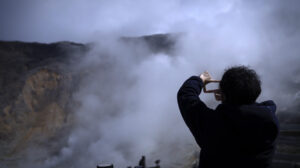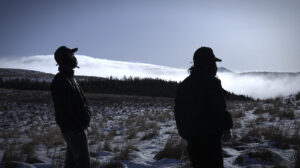Nature Study: MIST
Exploring perspectives and expressions that encourage us to have an empathy with nature
自然への共感を促す視点や表現を模索する
Manufacturing methods lead to the destruction of nature, while consumption trends accelerate it further. Alarmed by this current situation, we are seeing various initiatives being promoted around the world. Without being restricted to a one-size-fits-all perspective on environmental protection, we+ is reassessing the relationship between nature, the social environment and human beings, then exploring the possibilities for designs that build a close coexisting relationship. One of these is the Nature Study research project: the studio studies the history of living with nature and explores perspectives and expressions that encourage us to have an empathy with it. Through history research and fieldwork, the project explores the transitions and fluctuations of natural phenomena such as the flow of water or wind, the sparkle of light, the forces of magnetism and gravity, and the relationship between multilayered beauty and people. The project proposes a new way of being for objects, where man-made and natural are fused together.
自然破壊につながるものづくりや、それを加速させる消費スタイルの限界から、さまざまな取り組みが進められる現在。we+では、環境保護という画一的な視点にとどまらず、自然や社会環境と人間の関係を見つめ直し、親密な共存関係を築くデザインの可能性を探究しています。その一つが、自然とともに暮らしてきた歴史を学び、自然への共感を促す視点や表現を模索するリサーチプロジェクト「Nature Study」です。水や風の流れ、光のきらめき、磁力や重力といった自然現象の移ろいやゆらぎ、多層的な美しさと人々の関係を、歴史やフィールドワークを通して紐解くとともに、実験を繰り返すことでプロダクトの制作手法やインスタレーションの要素として昇華。人工と自然が融合した新たなもののあり方を提案しています。
The "Nature Study: Mist" exhibition comprises five sections on the theme of mist.
1. Language and Literature
2. Fieldwork and Experimentation
3. Inspiration
4. Prototyping
5. Installation – Waft
Nature Study: Mist展では、霧をテーマに次の5つのセクションで会場を構成しました。
1. 言葉と文学
2. フィールドワークと実験
3. インスピレーション
4. プロトタイピング
5. インスタレーション ― Waft
Waft - the installation that make the behaviour of mist more perceptible
霧のふるまいをより鮮明に感じるためのインスタレーション - Waft
Waft recreates the behaviour of mist in a certain space to make this part of nature more perceptible. People have lived with nature since ancient times. In Japan, with its abundant nature, there are countless words for mist, including usugiri (light mist), kawagiri (river mist), yugiri (evening mist), moya (mist) and kasumi (haze). The delicacy and empathy with nature is apparent in haikus, calligraphies and paintings, as well as in seasonal events. However, in modern life, where convenience and rationality are sought, mist tends to be seen as a mere change in weather that obstructs the view, and the sense of nostalgia and tenderness for it are disappearing. Gazing at flickering mist in a frame, just as we do with a painting, or observing it swirling in a circular window and touching it from time to time: these experiences offer opportunities to awaken people’s innate sensitivity to nature and to reconnect with it.
Waftは、霧のふるまいをある空間の中で再現することで、自然をより鮮明に感じるインスタレーションです。人々は古来より自然とともに暮らしを営んできました。とりわけ、ゆたかな自然に恵まれた日本では、霧にまつわる言葉だけでも枚挙にいとまがなく、薄霧、川霧、夕霧、靄(もや)、霞(かすみ)と、さまざまな表現が存在します。自然への繊細な感覚と共感は、俳句や書画、季節の行事にも多数垣間見ることができます。しかし、利便性や合理性が求められる現代の暮らしにおいて、霧はただ視界を遮る気象変化と捉えられがちであり、想いをはせ、愛でる感覚は失われつつあるのかもしれません。Waftでは、フレームの中でゆらめく霧を、絵画のように眺める。丸窓の中に立ち込める霧を俯瞰し、ときに触れてみる。それらの体験を通して、人々が本来持つ自然への細やかな感性を呼び覚まし、自然とのつながりを取り戻すきっかけを提供しています。
- Year
- 2022
- Category
- Venue
- nomena gallery Asakusa [Tokyo]
- Photo
- 林雅之
- Photo
- Masayuki Hayashi


